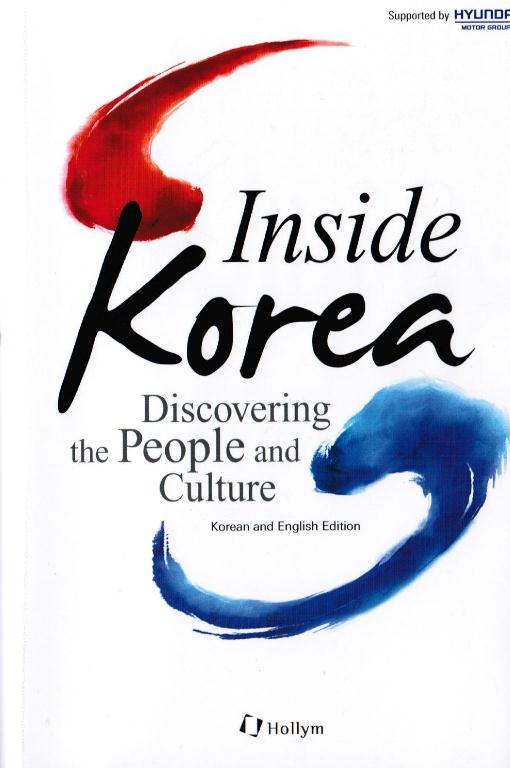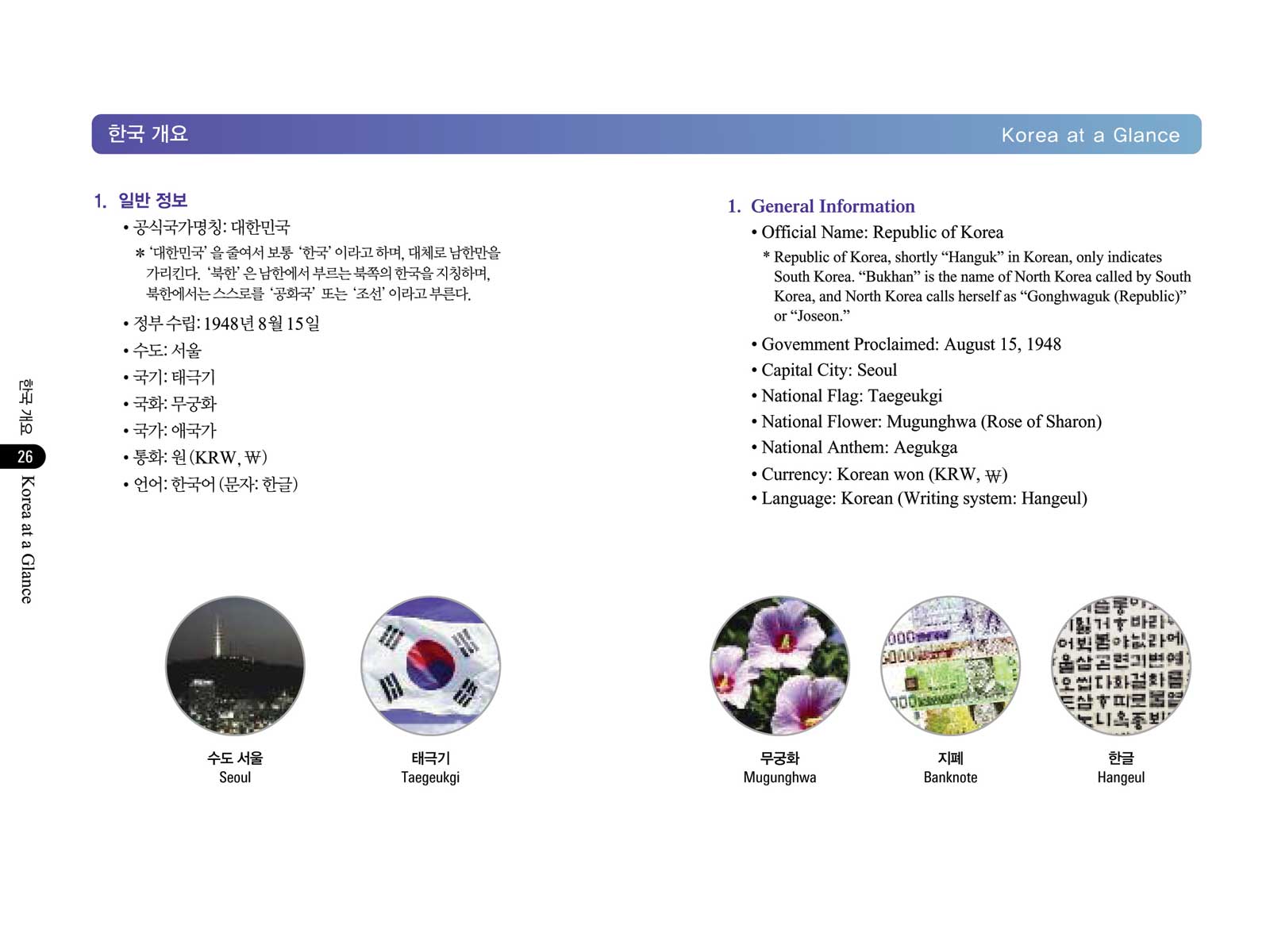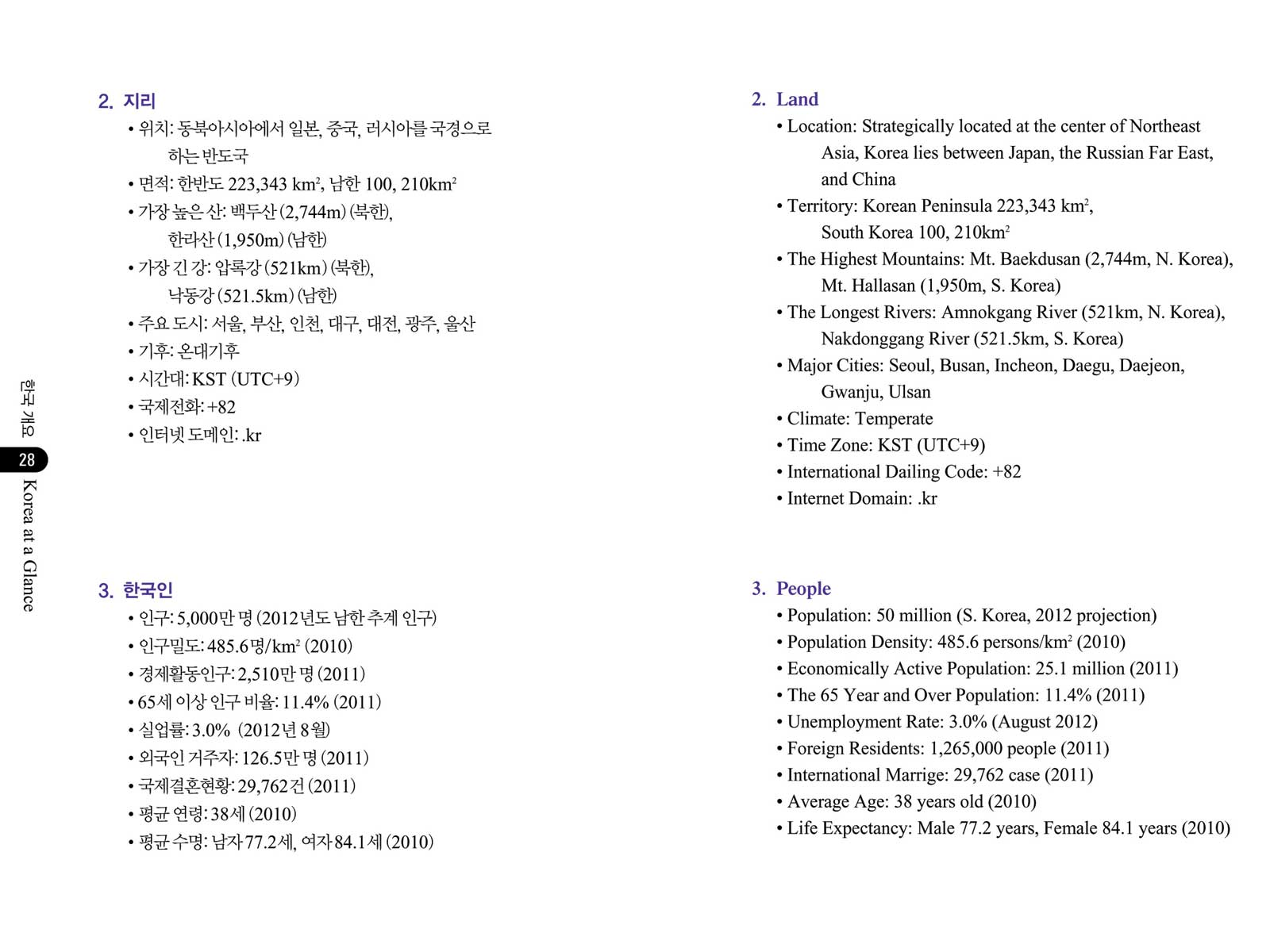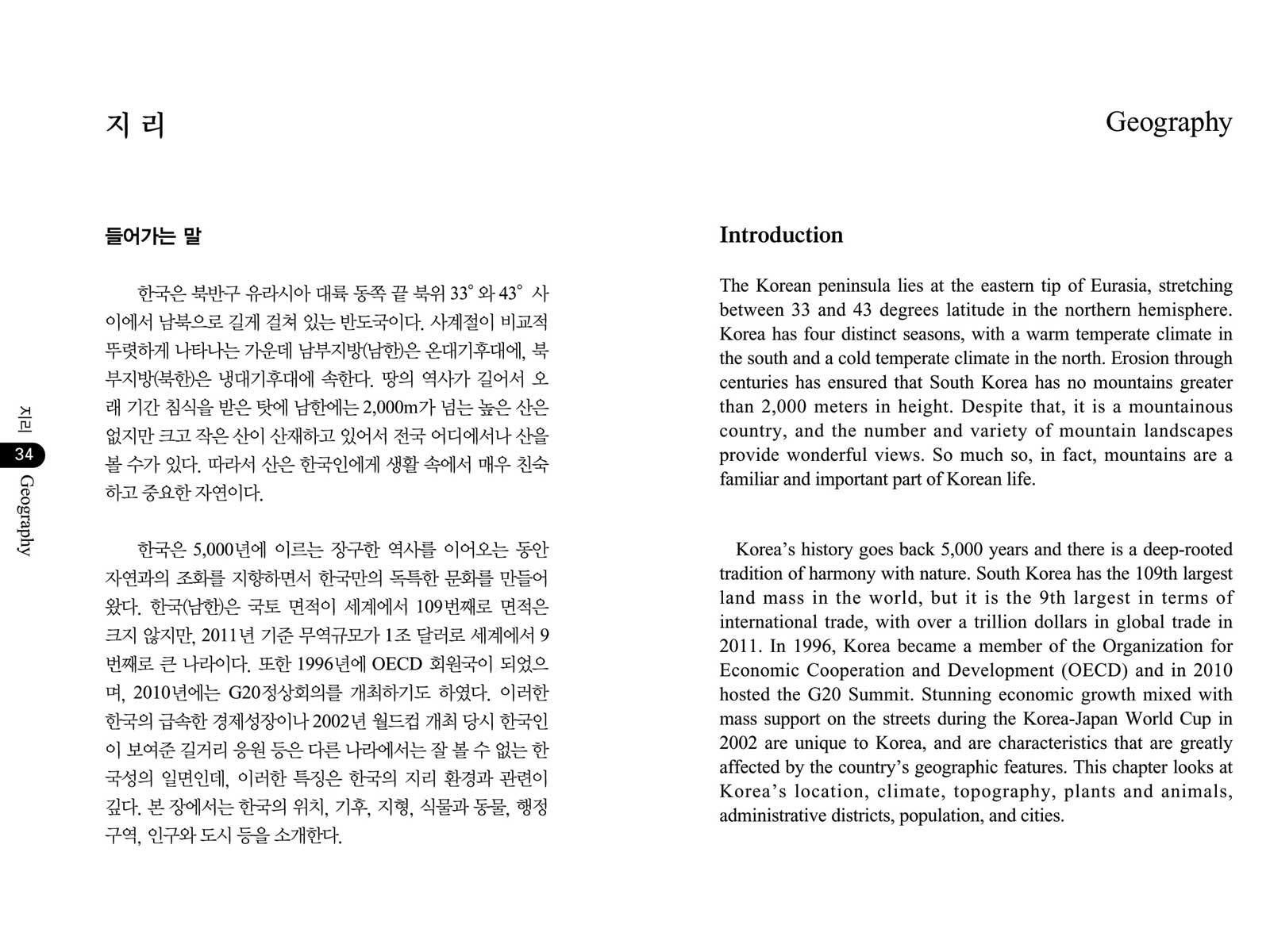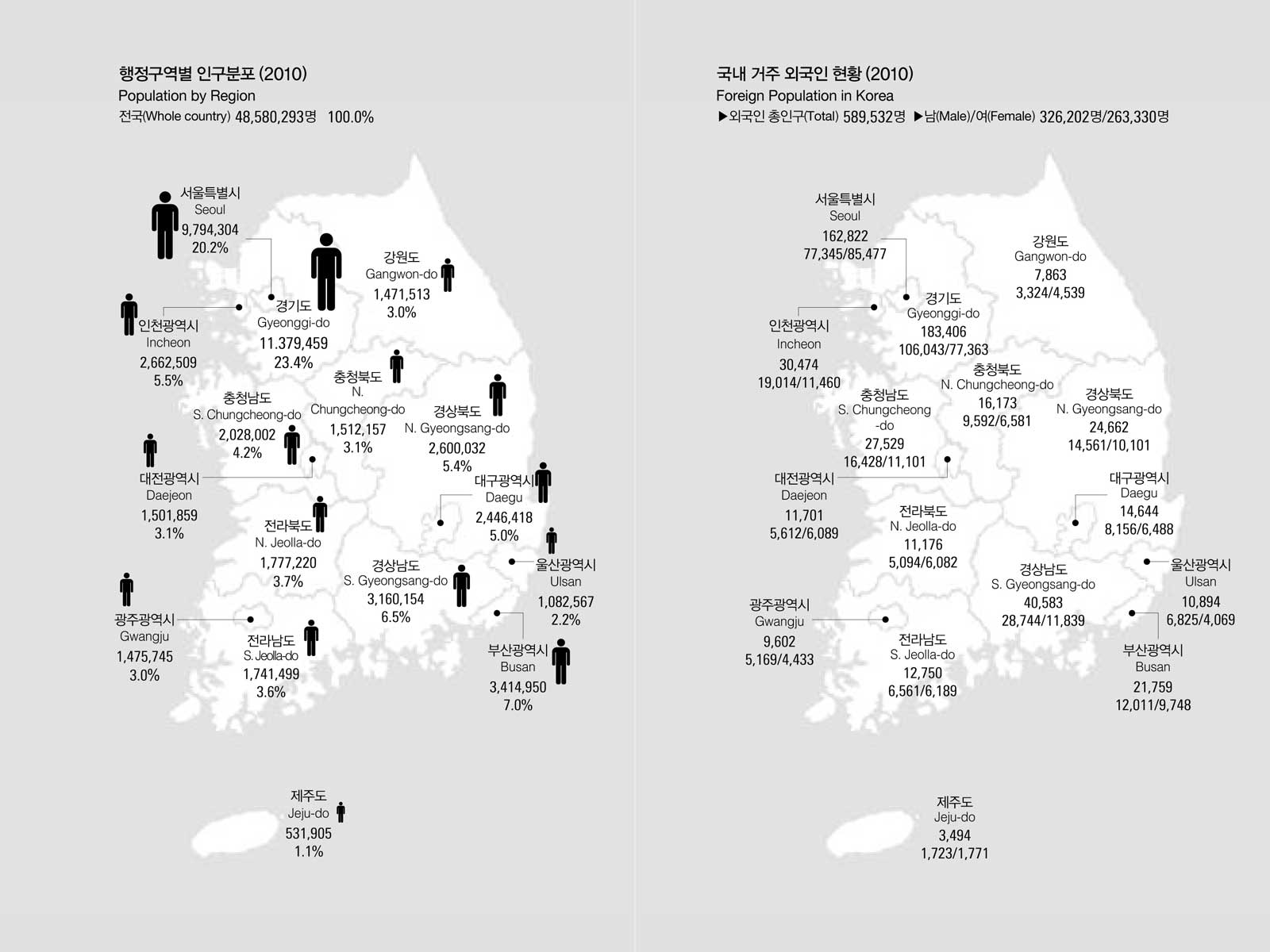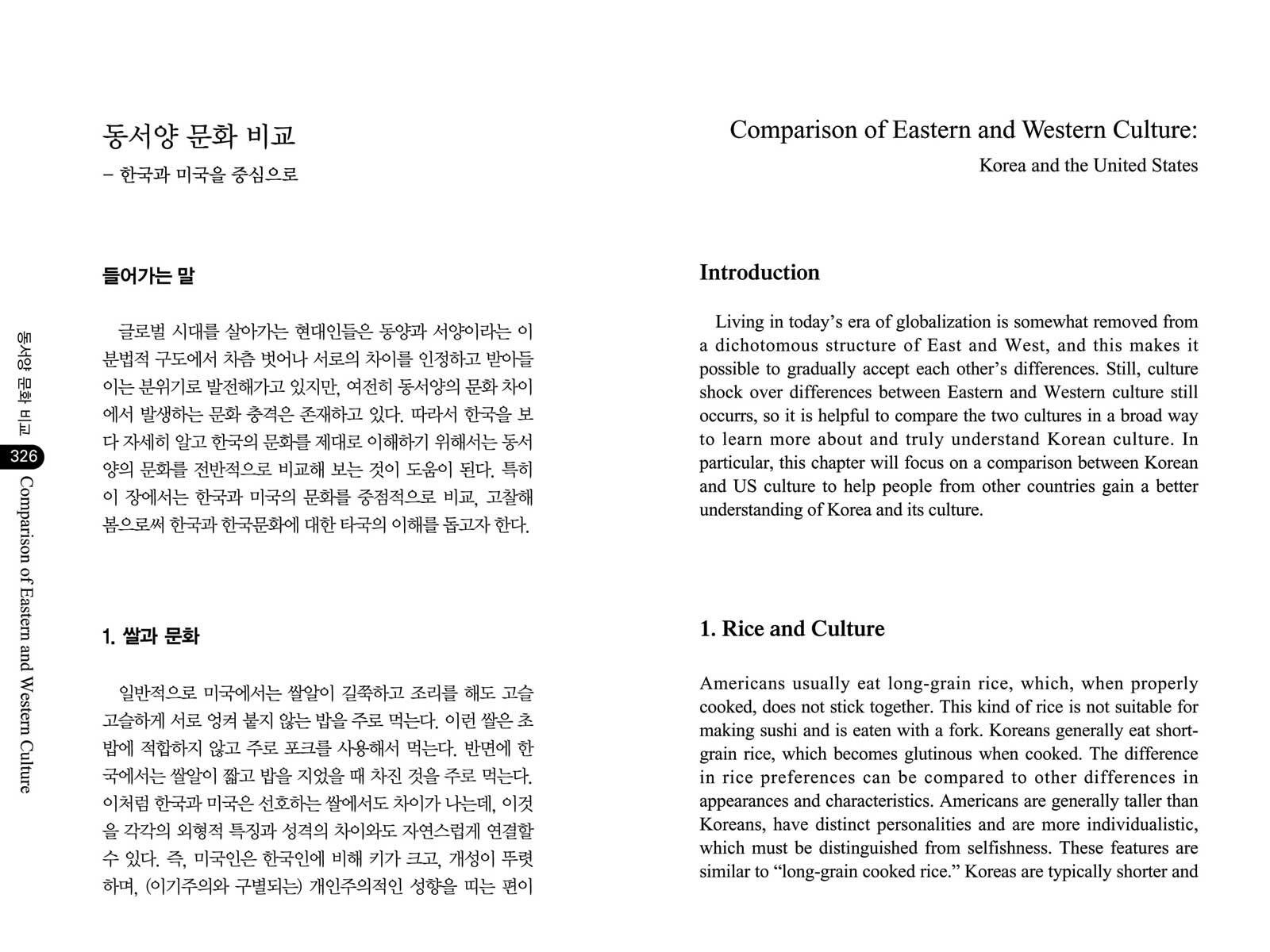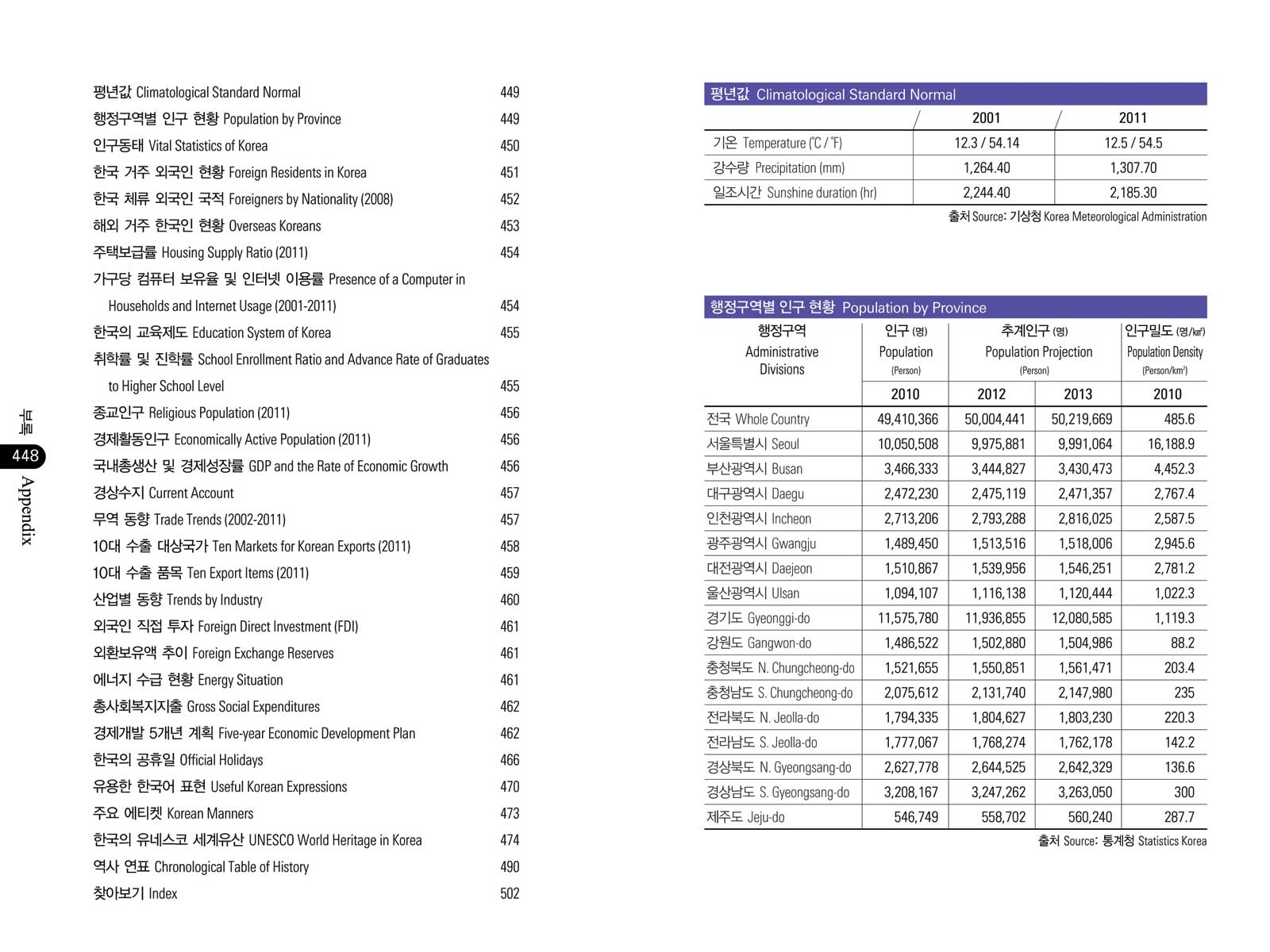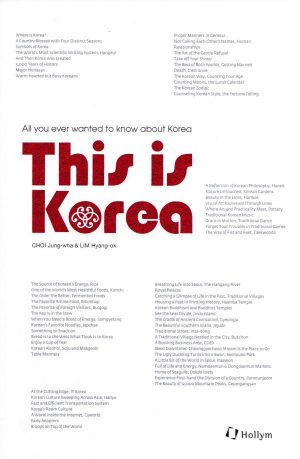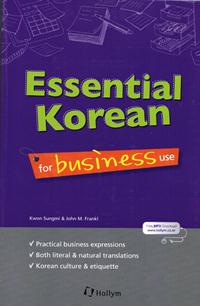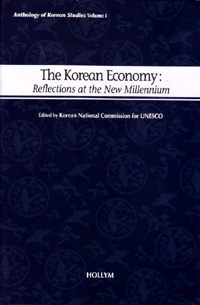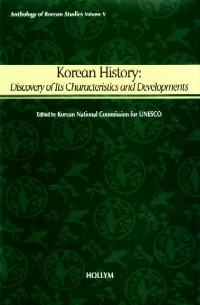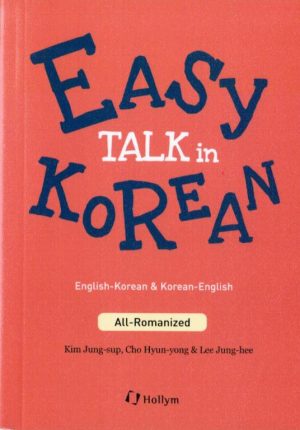Inside Korea
$34.50
Inside Korea is a bilingual (Korean/English) publication designed to increase understanding about Korea for people around the world and to present Korean society and culture in a thoughtful manner to foreigners who are not familiar with it. Korea is a nation with about five thousand years of history and rich cultural heritage. It is a country which realized stunning economic growth and democratic development in a very short span of time. In addition, Korea has recently been put on the proverbial global map, propelled by the Korean wave which hit the world, yet the country is still far from well-known across the world. What is Korea really like? In fact, it is not easy for both Koreans and non-Koreans to answer to this question. This query is where the idea of this book was first created.
While a great deal of information about any country can be accessed through the internet, this book provides a broad range of information in an organized and systemized collection that is portable and easily accessible to many people. This bilingual publication is presented in both English and Korean in hopes that the information and appreciation of Korea can be shared with people around the world.This book mainly consists of three parts. The first part (pp. 1-32) offers a brief introduction to Korea with reliable barometers in many aspects of Korean identity. The main part (pp. 33-446) of this book reveals Korea by eight categories: geography, history, politics, economy, society, culture, religion and religious culture, and scientific technology and industry. Two special commentaries on the North-South relations and East-West cultural differences are to help readers better understand Korea as a “divided country” with “Confucian culture.” Finally, the last appendix section contains statistical information for the reader’s convenient reference.
CONTENTS
Preface | Notes | Korea at a Glance
01 지리 Geography
This chapter looks at Korea’s location, climate, topography, plants and animals administrative districts, population, and cities, which greatly affected the country and Koreans’ life for so long.
Introduction | 1. Location & Territory | 2. Climate & Topography | 3. Plants & Animals | 4. Population
5. Settlements | Conclusion
02 역사 History
This chapter briefly describes the history of Korea from the early Paleolithic Age to the establishment of current government.
Introduction | 1. The Dawn of Korean History | 2. The Three Kingdoms, Unified Silla, and Balhae
3. Goryeo: Land of Empire | 4. Joseon, the Confucian State | 5. Modernization: Exertion & Frustration
6. Japanese Colonial Rule & the Independence Movement | 7. Establishment & Development of the Republic
of Korea
03 정치 Politics
This chapter introduces Korea’s political system and diplomatic relations with neighboring countries.
1. Constitution | 2. The Presidential System | 3. National Assembly | 4. Diplomacy
5. Symbols of Korea (Republic of Korea, Aegukga, Taegeukgi, Mugunghwa)
This chapter examines the background behind the national division, the Korean War, and North-South relations after the war to help international community gain a greater understanding of the two Koreas.
04 경제 Economy
Introduction | 1. Economic Strategies and Achievements after the War
2. Heavy Industry Strategy, the Depression of 1980 and Beyond
3. Economic Democracy and Banking Liberalization after 1986
4. The Financial Crisis of 1997 and Solution | 5. The Korean Economy after the Asian Financial Crisis
05 사회 Society
Introduction | 1. Compressed Modernization: The Key to Understanding Modern Korean Society
2. Population, Households, and Dwellings | 3. Family, Marriage, and Women
4. International Marriages and a Multicultural Society | 5. Education
6. Employment and Welfare | 7. Religion and Leisure Time
06 문화 Culture
This chapter reviews some cultural elements which are a part of the everyday life of Koreans, such as clothing, food, housing, and popular culture.
Introduction | 1. Korean and the Korean Alphabet | 2. Rites of Passage | 3. Clothes
4. Dwellings | 5. Food | 6. Fine Arts and Pop Culture | Conclusion
This chapter focuses on a comparison between Korean and US culture to help people from other countries gain a better understanding of Korea and its culture.
07 종교와 전통문화 Religion and Religious Culture
This chapter describes various features associated with religions in Korea as well as cultural traditions that have been influenced by religions.
Introduction | 1. Christianity | 2. Buddhism | 3. Confucianism | 4. Shamanism | Conclusion
08 과학기술과 산업 Scientific Technology and Industry
This chapter looks at the background of Korea’s stunning economic growth and the process of industrial development after 1960.
Introduction | 1. Construction Industry | 2. Steel Industry | 3. Shipbuilding Industry | 4. Automotive Industry
5. IT Industry | 6. Development and Dissemination of Science and Technology | Conclusion
참고문헌 Bibliography | 부록 Appendix

